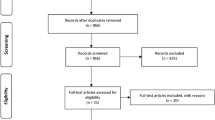Abstract
Aim To investigate the success rate of 'bidirectional' splinting - both internal and external - of teeth with longitudinal cracks and reversible pulpitis, as well as to identify any signs or symptoms that could give a prognostic indication of success.
Design Cohort study.
Cohort selection Thirty-four teeth from 33 patients visiting the Department of Conservative Dentistry at the Yonsei University Dental Hospital, Seoul, South Korea, between June 2016 and November 2017, diagnosed with longitudinal cracked teeth with reversible pulpitis. Teeth with signs of pulp necrosis, irreversible pulpitis or other types of longitudinal cracks were excluded.
Data analysis These teeth were treated by a systematic protocol of initial external splinting with a metal band, crack removal and internal splinting with composite resin, placement of a temporary crown, before a final permanent crown. Symptoms and vitality were assessed at every stage and root canal treatment provided where deemed necessary. The teeth were then followed up for up to four years to assess tooth survival and pulp vitality.
Results Accounting for five dropouts during the treatment protocol, 29 teeth reached at least a one-year recall. Of these, 21 (72%) had pulp survival, eight (28%) had required root canal treatment - six of those before final crown cementation - and zero teeth required extraction (100% survival rate). Cracked teeth without initial tenderness to percussion showed a 94% pulp survival rate, while those with tenderness had only a 46% pulp survival rate.
Conclusions A systematic approach to treating cracked teeth with reversible pulpitis should be utilised to maintain tooth vitality and survival. Using a bidirectional splinting method provides good outcomes for these teeth. Tenderness to percussion is a significant prognostic indicator of pulp vitality and whether root canal treatment should be initiated.
This is a preview of subscription content, access via your institution
Access options
Subscribe to this journal
Receive 4 print issues and online access
$259.00 per year
only $64.75 per issue
Buy this article
- Purchase on Springer Link
- Instant access to full article PDF
Prices may be subject to local taxes which are calculated during checkout
Similar content being viewed by others
Change history
25 March 2022
A Correction to this paper has been published: https://doi.org/10.1038/s41432-022-0234-2
References
Rivera E M, Walton R E. Longitudinal tooth cracks and fractures: an update and review. Endod Topic 2015; 33: 14-42.
Alkhalifah S, Alkandari H, Sharma P N, Moule A J. Treatment of Cracked Teeth. J Endod 2017; 43: 1579-1586.
Krell K V, Rivera E M. A Six Year Evaluation of Cracked Teeth Diagnosed with Reversible Pulpitis: Treatment and Prognosis. J Endod 2007; 33: 1405-1407.
Wu S, Lew H P, Chen N N. Incidence of Pulpal Complications after Diagnosis of Vital Cracked Teeth. J Endod 2019; 45: 521-525.
Opdam N J M, Roeters J J M, Loomans B A C, Bronkhorst E M. Seven-year Clinical Evaluation of Painful Cracked Teeth Restored with a Direct Composite Restoration. J Endod 2008; 34: 808-811.
Signore A, Benedicenti S, Covani U, Ravera G. A 4-to 6-year retrospective clinical study of cracked teeth restored with bonded indirect resin composite onlays. Int J Prosthodont 2007; 20: 609-616.
Author information
Authors and Affiliations
Corresponding author
Rights and permissions
About this article
Cite this article
Holme, W. Does bidirectional splinting improve outcomes in cracked teeth with reversible pulpitis?. Evid Based Dent 22, 152–153 (2021). https://doi.org/10.1038/s41432-021-0223-x
Received:
Accepted:
Published:
Issue Date:
DOI: https://doi.org/10.1038/s41432-021-0223-x



